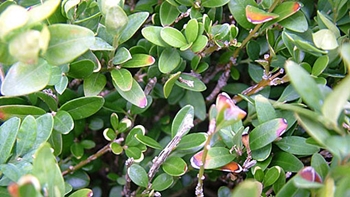
Honey fungus has come out top of the charts for the second year running when it comes to garden diseases. The list of most prolific garden diseases was compiled by the RHS Members’ Advisory Service, based on enquiries received in 2012. Pythiums and leaf spots again occupied the second and third positions with rusts and phytophthora diseases completing the top five.
But while there were few surprises at the top of the list the most significant development during 2012 was the massive increase in the number of cases of Cylindrocladium box blight. The reported cases of box blight caused by Cylindrocladium buxicola hit a 10-year high of 100, which is more than double the 2011 figure.
Box blight is a fungal disease of box resulting in bare patches and dieback of box, especially in topiary and parterres. High rainfall during the growing season makes plants particularly vulnerable as young leaves are more susceptible to infection. Other diseases that took advantage of a very wet 2012 were Pythium root rots, fungal leaf spots and scabs – which returned to the top 10 after a 12-month absence.
Honey fungus spreads underground, attacking and killing the roots of perennial plants and then decaying the dead wood. It is the most destructive fungal disease in UK gardens. There are no chemicals available for control, the only effective remedy is to excavate and destroy, by burning or landfill, all of the infected root and stump material.





